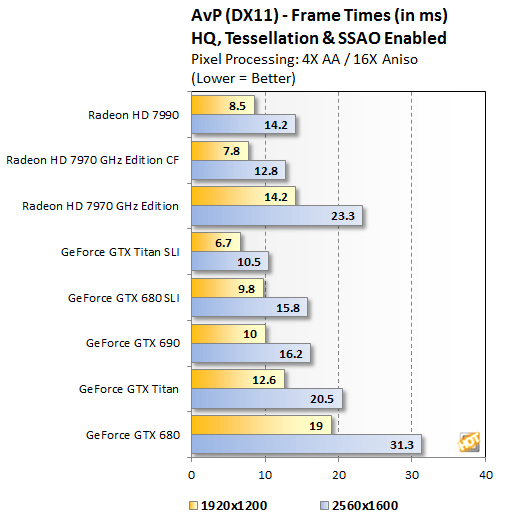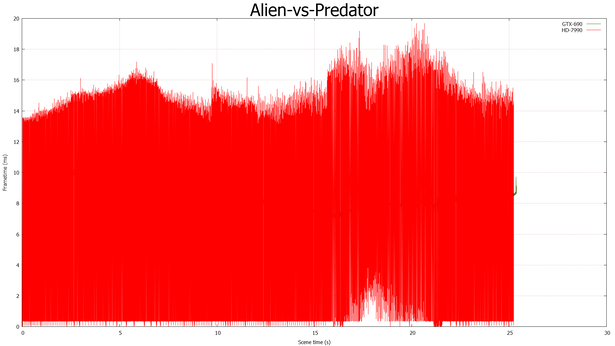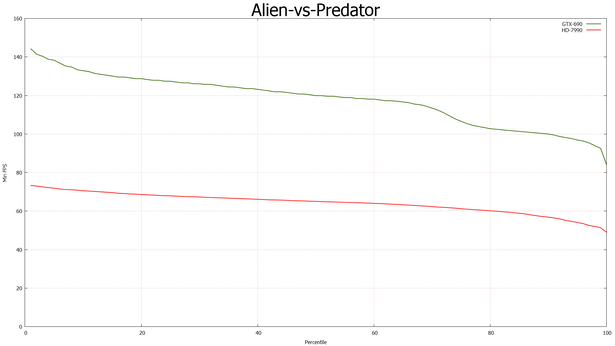AMD Radeon HD 7990 Review: The Quiet Beast
Alien vs. Predator Performance
|
|
|
|
|
The Alien vs. Predator benchmark makes use of the advanced Tessellation, screen space ambient occlusion, and high-quality shadow features available with DirectX 11. In addition to enabling all of the aforementioned DirectX 11-related features offered by this benchmark, we also switched on 4X anti-aliasing along with 16X anisotropic filtering to more heavily tax the graphics cards being tested. |



1920x1200 - Click For An Enlarged View

1920x1200 - Click For An Enlarged View
Frame pacing, however, seems to be an issue in this game. We just recently (as in a couple of days ago), got our hands on the necessary hardware and software to employ NVIDIA's FCAT (Frame Capture Analysis Tool). We're still learning the ins and outs and getting comfortable with the setup, but have some initial results with the Radeon HD 7990 and a GeForce GTX 690 to show to you here.
If you're unfamiliar with FCAT, frame times, frame pacing, etc., we should explain what you're seeing in the two plots directly above. The top graph shows the actual times a frame (or part of a frame) would spend on-screen, with V-Sync disabled and the graphics cards connected to a 60Hz screen. The DVI output from our test system is split into two feeds, with one routed to a 30" LCD for testing and the other to a second rig outfitted with a DVI capture card and high-speed storage array. The FCAT software is used to mark individual game frames with a specific color and when those frames (or parts of the frames) are output to the screen, the capture card grabs them in real-time and at full resolution (up to 2560x1440) and then the FCAT analysis tools can count the frames and determine how long they spent on screen and how much of the frame was displayed. Dropped frames are counted as well as "runt" frames, which are tiny slivers of a frame that may be imperceptible to the untrained eye.
Thanks to the hard work and insight of some of our compatriots in the on-line tech press, CrossFire multi-GPU configurations are known to have frame pacing issues in a number of games currently. AMD is working on a fix, but for now, the issues persist and should be mentioned.
What the top plot tells you is that with the Radeon HD 7990, some frames are on-screen for upwards of 17-18ms, while others are barely displayed at all. The resulting jaggedness of the plot shows that although the Radeon HD 7990 is actually rendering the frames (the FPS count in the top graphs is accurate--the card is actually doing the work to render the frames), they are not being output to the screen properly, and may not actually benefitting gamers. The second plot shows that although the GeForce GTX 690 put up a lower average frame rate (99.9 FPS vs. 117 FPS), its minimum framerate was higher for much longer that the Radeon HD 7990, which is perceived as smoother, more fluid animation with less stutter.







